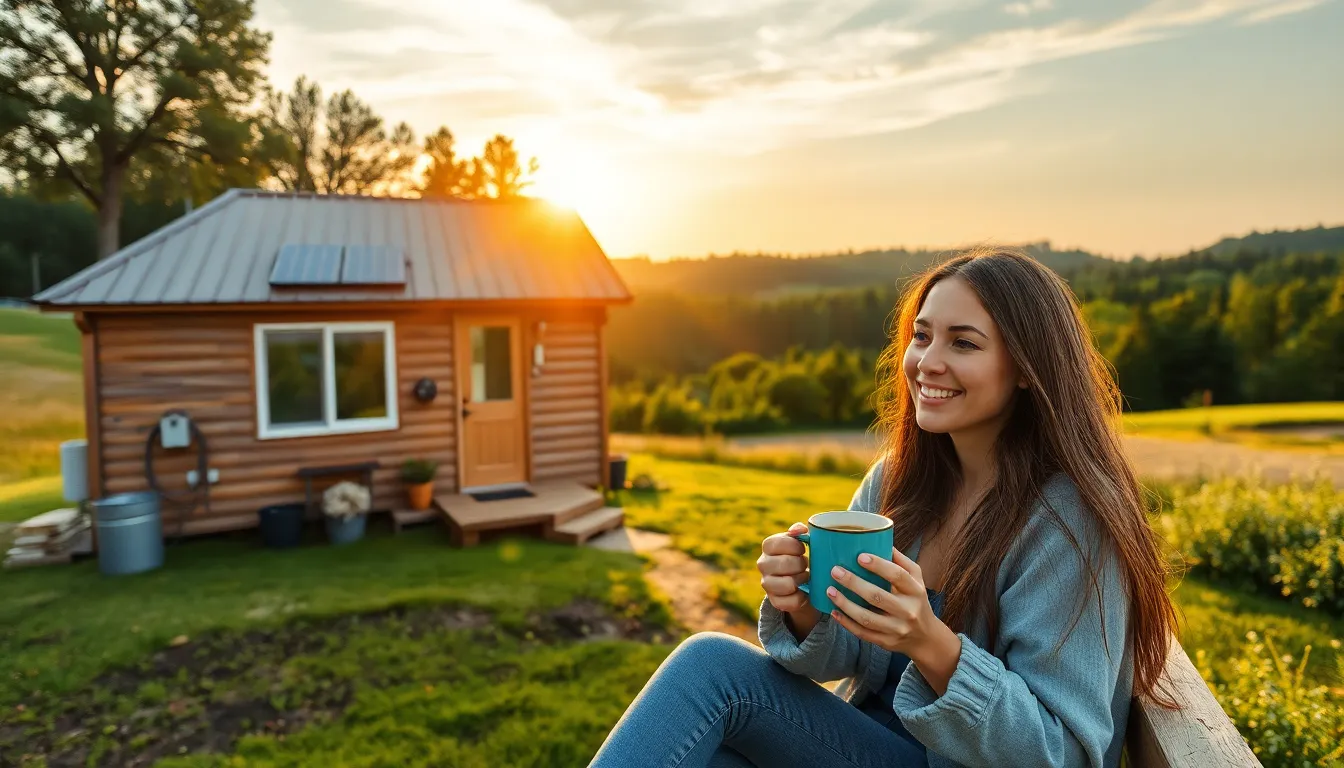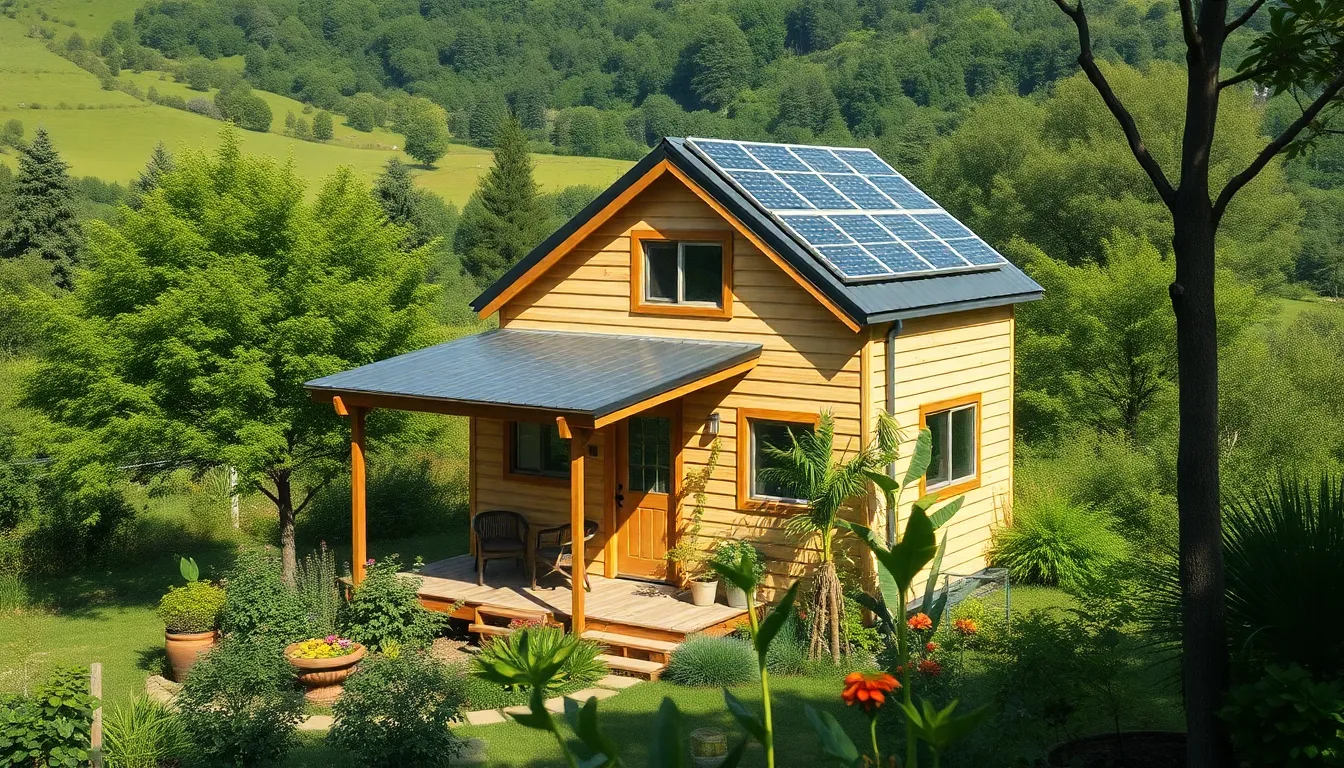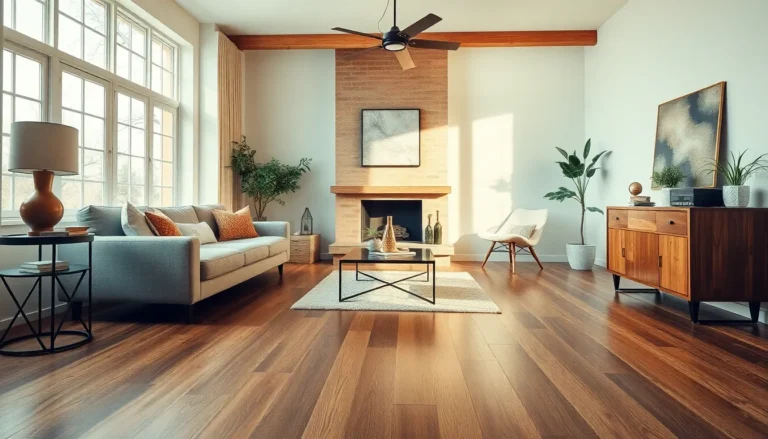Table of Contents
ToggleImagine a life where your biggest worry isn’t the Wi-Fi signal but whether to brew coffee or tea while enjoying the sunrise. Off-grid tiny homes offer a whimsical escape from the chaos of modern living, allowing individuals to embrace simplicity and sustainability. These pint-sized havens don’t just minimize square footage; they maximize freedom, creativity, and a dash of adventure.
What Are Off-Grid Tiny Homes?
Off-grid tiny homes operate independently from traditional utility systems. These homes utilize renewable energy sources, such as solar panels or wind turbines, to provide electricity. Rainwater harvesting systems contribute to water supply, enabling sustainable living practices. The design of off-grid tiny homes often incorporates energy-efficient appliances to minimize consumption and environmental impact.
Lifestyle choices in off-grid tiny homes embrace minimalism and self-sufficiency. Individuals inhabit these spaces to cultivate closer connections with nature, fostering a deeper appreciation for their surroundings. They often prioritize eco-friendly materials and sustainable construction methods, reflecting a commitment to long-lasting harmony with the environment.
The compact nature of tiny homes offers flexibility in location and mobility. Many owners choose to place their homes in remote or rural areas, enhancing their sense of adventure and exploration. Off-grid living encourages creativity in design and functionality, as residents adapt their space to meet their unique needs.
Financial benefits accompany the decision to live off-grid in a tiny home. Lower utility costs and reduced consumption often translate to significant savings over time. By downsizing, individuals typically experience less clutter, which contributes to improved mental well-being and overall happiness.
Overall, off-grid tiny homes symbolize more than just alternative living spaces. They represent a lifestyle shift toward sustainability, freedom, and simplicity, allowing residents to prioritize what truly matters in life.
Benefits of Off-Grid Tiny Homes
Off-grid tiny homes offer various advantages, particularly in sustainability and cost savings. These dwellings cater to environmentally conscious individuals by promoting eco-friendly living.
Sustainability and Environmental Impact
Sustainability stands at the forefront of off-grid tiny homes. They utilize renewable energy sources, like solar panels and wind turbines, reducing reliance on fossil fuels. Rainwater harvesting systems provide clean water, minimizing resource depletion. Compact designs encourage efficient energy and water use, resulting in a smaller ecological footprint. Natural materials often feature in construction, enhancing environmental stewardship. Simple living fosters a closer connection to nature, inspiring residents to adopt more sustainable practices in their daily lives. Ultimately, off-grid tiny homes significantly contribute to a greener planet while promoting a minimalist lifestyle.
Cost-Effectiveness
Cost-effectiveness emerges as a critical benefit of off-grid tiny homes. Lower utility costs contribute to substantial savings over time. Individual homeowners can often reduce or eliminate monthly expenses associated with traditional utility systems. The initial investment in energy-efficient appliances and renewable energy setups typically pays off through decreased energy bills. Taxes and insurance generally decrease with smaller property sizes, resulting in additional savings. Many off-grid tiny homes use less building material, reducing construction costs. Financial flexibility emerges as homeowners enjoy lower living expenses, allowing them to allocate resources toward experiences rather than possessions.
Key Features of Off-Grid Tiny Homes
Off-grid tiny homes boast essential features that align with sustainability and self-sufficiency. These homes use innovative systems for energy, water, and waste, maximizing their independence from traditional utilities.
Energy Sources
Solar panels dominate the energy landscape of off-grid tiny homes. Many homeowners also incorporate wind turbines to harness nature’s energy. Batteries store generated electricity for use during periods of low sunlight or wind. Some designs integrate energy-efficient appliances to lower consumption further. Overall, reliance on renewable sources reduces the carbon footprint and enhances sustainability.
Water Supply and Waste Management
Rainwater harvesting systems collect and filter water for various uses, ensuring a reliable supply. Some homes feature composting toilets, which minimize waste and conserve water. Greywater systems recycle water from sinks and showers, repurposing it for irrigation. Efficient plumbing fixtures reduce overall consumption, promoting responsible use. Together, these methods create an eco-friendly approach to living in harmony with nature.
Choosing the Right Off-Grid Tiny Home
Finding the ideal off-grid tiny home requires careful thought. Evaluating key factors helps ensure the perfect choice aligns with individual needs and lifestyle aspirations.
Considerations for Buyers
Buyers should first assess their energy and water needs. Understanding personal consumption patterns influences the size of solar panels and storage tanks. Location plays a crucial role; choosing a site with ample sunlight or wind exposure enhances energy generation. Budget constraints also matter, as initial costs vary significantly. Evaluating zoning laws and land permits prevents future legal challenges. Additionally, examining local climate conditions helps in selecting appropriate insulation and heating methods. Since off-grid living embraces minimalism, prioritizing square footage can maximize functionality while minimizing clutter.
Popular Designs and Models
Numerous designs cater to those seeking off-grid tiny homes. The A-frame model features a steep roof, promoting efficient water runoff and snow management, perfect for colder climates. Meanwhile, the rustic cabin style emphasizes wood construction, blending seamlessly with natural surroundings. Modern minimalist homes favor clean lines and open spaces, reflecting an uncluttered aesthetic. Shipping container homes offer durability and a unique design, making recycling materials central to their appeal. Each design provides flexibility in customization, allowing homeowners to incorporate personal touches, such as outdoor decks or eco-friendly materials. These models exemplify innovation in creating sustainable living spaces.
Real-Life Examples of Off-Grid Tiny Homes
Off-grid tiny homes exemplify sustainable living in real-world settings. These homes showcase how individuals adapt to eco-friendly lifestyles while enjoying the comforts of modern living.
Case Study 1
A notable example is the Mica Cabin in Washington. This tiny home features solar panels, which provide all the electricity needed for daily activities. Rainwater harvesting systems collect water, allowing for self-sufficient living in the forest. Minimalist interiors encourage comfortable living while reducing clutter. Builders used reclaimed materials, emphasizing sustainability throughout the construction process. Residents enjoy direct access to nature, fostering connection and adventure. The Mica Cabin exemplifies the balance between comfort and environmental responsibility.
Case Study 2
The Tiny House in Colorado offers another inspiring case. Designed as a mobile unit, this home incorporates wind turbines that generate additional energy. Inside, energy-efficient appliances maximize space and minimize consumption. Collecting rainwater provides a sustainable water source, harmonizing with the home’s overall design. The use of recycled materials contributes to eco-friendly construction, making it both practical and sustainable. Owners often relocate to enjoy different environments. The Tiny House illustrates the versatility and adaptability of off-grid tiny living.
Conclusion
Off-grid tiny homes represent a transformative shift toward a simpler and more sustainable lifestyle. They allow individuals to break free from the constraints of traditional living while embracing eco-friendly practices. With their innovative designs and renewable energy solutions, these homes not only reduce environmental impact but also foster a deeper connection with nature.
As more people seek freedom from the conventional lifestyle, off-grid tiny homes offer a unique blend of adventure and self-sufficiency. By prioritizing experiences over possessions, homeowners find joy in simplicity and sustainability. This growing movement reflects a commitment to living harmoniously with the planet while enjoying the comforts of modern life.








